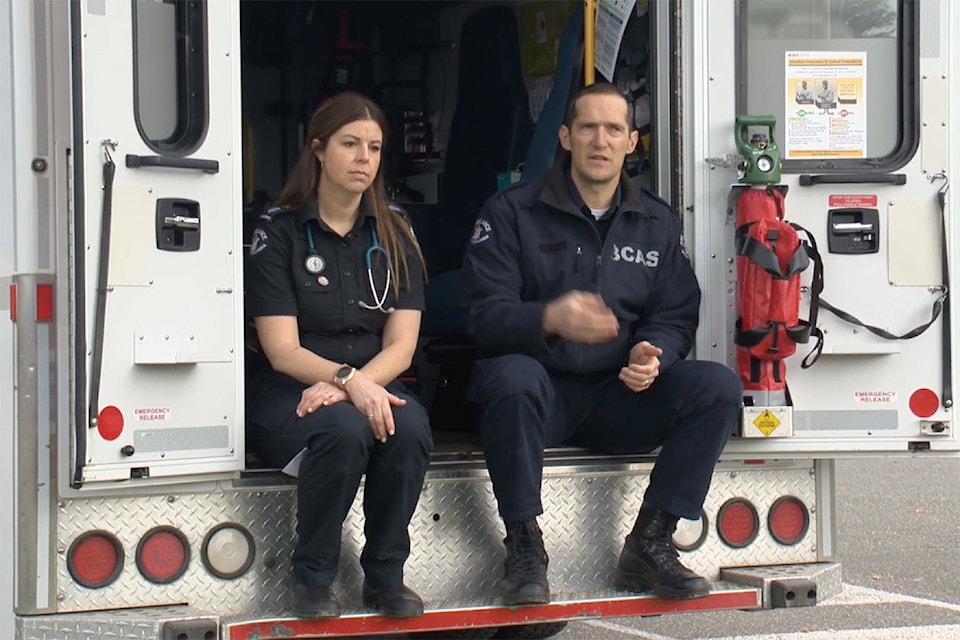The second video in a three-part series about overdose prevention was released last week, helping spread the word that the vast majority of fatalities happen at home, not on the street.
In this installment of The Hidden Crisis series, two Chilliwack paramedics speak about their experiences tending to calls for opioid overdoses, specifically those that take place in people’s homes.
The videos were filmed in Chilliwack and the project was done by Pacific Community Resources Society (PCRS). The three videos focus on the hidden population of users in the Eastern Fraser Valley – mostly married men aged 29 to 49 with children and adult children who live with their parents.
“I think ultimately we want to change the stigma that’s attached both to the families and the substance users,” said Jodi Higgs, manager of Chilliwack Health and Housing Centre, which is part of PCRS.
Family members, healthy teenagers and people who work regular jobs are some of those overdosing, said paramedic Chris Ens. He, along with fellow paramedic Megan Tait, were interviewed for the video.
At the beginning of his career 18 years ago, it was “rare” for them to get overdose calls, even on the Downtown Eastside, Ens said.
“Over the last 10 years, it has progressive gotten worse and worse. Each year, it seems that the drugs are more dangerous… and the deaths are just climbing unfortunately,” Ens said.
Opioid overdoses are happening all over.
“We are going to every area of Chilliwack – private residences, parks, restaurants – for all demographics, all ages, all lifestyles for people who are having emergencies related to their substance use,” Tait said.
Ens described what it’s like to witness an overdose.
“It’s ugly. People are blue, they look dead.”
Tait and Ens encourage substance users not to use alone and to download the Lifeguard App. The app is activated (timer is set) by the user before they take their dose and after a certain amount of time, if the user does not stop the timer a call is send straight to 911.
Higgs said they are hoping the videos give friends and family “the support they need to put their own emotion aside in order to walk alongside their loved one. That’s how the shame will be reduced.”
The first video was released in July. There is no set date for the release of the third video.
READ MORE: Opioid crisis videos filmed in Chilliwack focus on ‘hidden population’
PCRS in Chilliwack (45921 Hocking Ave.) also offers in-person group sessions for family and friends, naloxone training workshops, one-on-one counselling and more. Call 604-795-5994 for more info, or 604-798-1416 to register for a free naloxone training workshop. Folks can also pick up free naloxone kits at that location.
Black Press recently put out an overdose prevention guide which can be picked up at the Chilliwack Progress office (104-45833 Alexander Ave.) and at the PCRS office (45921 Hocking Ave.). Or, read the entire guide through our e-editions page.
RELATED: Black Press Media launches updated Overdose Prevention resource guide
Do you have something to add to this story, or something else we should report on?
Email: jenna.hauck@theprogress.com
Twitter: @PhotoJennalism
